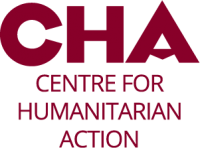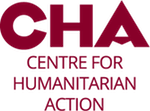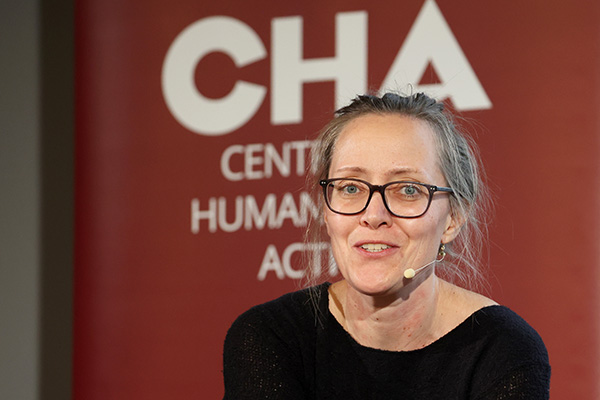| Author: | Andrea Düchting |
| Date: | 11. April 2023 |
Over the past few decades, digital technologies have seen a massive increase in use and have profoundly shaped the humanitarian system. Their exponential growth has greatly increased the amount of data to be managed and accelerated the speed with which information travels. This growth has triggered discussions around the efficiency of humanitarian services needed to respond to rising humanitarian needs and sector-wide funding cuts by fostering evidence-based programming, improved coordination, and increased accountability. Digital tools have become indispensable.
However, the technologies are often used in isolation, for specific projects or workstreams, and infrequently embedded across organisational structures and functions. They are tested and introduced in the midst of a crisis when funding is available in contrast to sufficient time required for co-designing sustainable solutions with partners and affect populations, not to speak about long-term aspirations to build data governance systems that respond to different accountability requirements, and people’s capacities and capabilities. This in turn impacts the sector’s ambition towards strengthening accountability to affected populations, interoperable data systems for more integrated programming in protracted crisis and the ever increasing humanitarian needs in emergencies. Common business processes and standards remain limited, and the opportunity to changing the system behind the technology and digitally transform the sector by tackling the system’s power imbalances are lost.
Until recently, the digitalisation of the humanitarian sector was mainly driven by technology enthusiasts. Operational programme teams, the ones in charge of programme design and implementation, are only slowly picking up and understanding their important role and responsibility in technology- and data-related decision making. As a result, technology is mainly applied to streamline organisational and sector-wide processes to become more efficient and effective while ensuring legal accountability towards donors. And data protection experts keep focusing on the compliance with different rules and regulations. Programme teams, in turn, have not provided strong grounds to opt for or against the use of specific technology leaving the impression that the sector’s digitalisation process is widely discussed for efficiency purposes, less so for programme quality purposes.
Despite its potential, social accountability is rarely discussed when applying digital technologies and processing people’s data. We all navigate mobile messaging apps and social media daily but struggle to use these in humanitarian practice.
In 2020, more than 5.2 billion people worldwide were connected digitally. Mobile phones are used to access services, receive updates, or be in touch with loved ones. Simply said, digital tools change the way people communicate. The COVID-19 pandemic amplified this trend and forced humanitarian organisations to use digital solutions to continue meeting people’s needs and coordinating with frontline workers and partners. But for insiders the increasing importance of digital technologies, for good and bad, became evident long before the pandemic.
One example is the weaponization of social media in Syria where the Russian government had coordinated a disinformation campaign against the white helmets back in 2016/17. One might also remember the devastating role of social media for the Muslim Rohingya in Myanmar and later in Bangladesh which sparked discussions around communication as aid and the role of technologies in accessing digital aid. The importance of digital communication tools is further apparent in the migration crisis in Venezuela where social media is considered a complimentary part of wider communication efforts and a vital way for people to link up with sources of support. Again, in the ongoing humanitarian crisis in Ukraine, digital communication is indispensable.
In contrast to our own digital lives, humanitarians keep favouring traditional communication tools when informing and communicating with affected people, claiming that face-to-face interactions remain people’s preferred way of communication. Practitioners do consider technology as a vital tool to meaningfully engage people but in most cases the use of mobile messaging apps or digital platforms are restricted for privacy or political reasons. In-house solutions which are data protection and privacy conform are developed instead.
At the same time, most organisations have introduced feedback mechanisms and are committed to using people’s preferred communication channels. But what are preferred communication channels if the sector already struggles with getting the basics right?! Most organisations continue focusing on one-way information sharing instead of two-way communication and sufficient evidence on people’s preferred channels for communication and perceived digital harms is generally missing. It thus feels like an honest discussion about data protection and digital risks versus meaningful participation and inclusion of diverse population segments is more needed than ever.
Last but not least, digital technologies can contain new accountability needs but also reveal important accountability gaps. For example, accountability by design is widely unknown in the humanitarian sector. When asking humanitarian practitioners about digital accountability, they usually refer to data protection frameworks, notably the collection of consent and data subject rights. Only few organisations consider digital accountability from a social perspective by putting people at the centre and applying client-responsive approaches or mainstreaming new concepts such as digital literacy and data rights. The majority, however, remains stuck with their own digitisation or digitalisation processes which often miss to consult and involve in-country partners in data and technology-related decision-making, not to speak about affected people.
There are few flagship projects like the data portability project of the Collaborative Cash Delivery Network which explores new ways of working and approaches to strengthen affected people’s data agency. This includes digital governance models that aim at enabling data owners to take informed decision about their data. Their learnings might function as a role model for unpacking the system’s power imbalances and supporting the sector’s digital transformation based on transparent data governance systems that are built for and with people.
For this to happen, digital accountability and technical solutions are key but political willingness and readiness to change are more essential. When developing technical solutions in isolation without taking long-term aspects and the whole ecosystem into account, we risk replicating the systems offline problems into an online environment. There is still much to learn. So, let’s continue talking about how to tackle power imbalance in humanitarian action with technology and locally led management models during our CHA Conference on 23 and 24 May 2023 in Berlin, Germany.
Andrea Düchting is a fellow at the Centre for Humanitarian Action (CHA). She leads the research project on digitalisation and innovation of German humanitarian aid. Her interests include food security, partnerships and localisation, Accountability to Affected Populations as well as personal data rights and data protection.



Related posts
CHA Conference 2023: Tackling power imbalances in humanitarian action
23.05.2023 00:00 - 23:59Digital Accountability
23.02.2023Data & Digitalisation